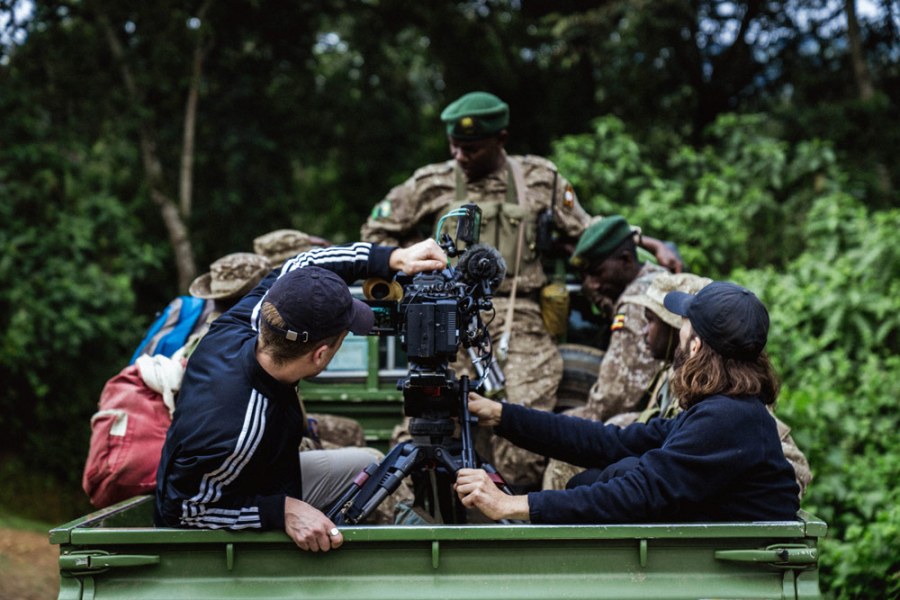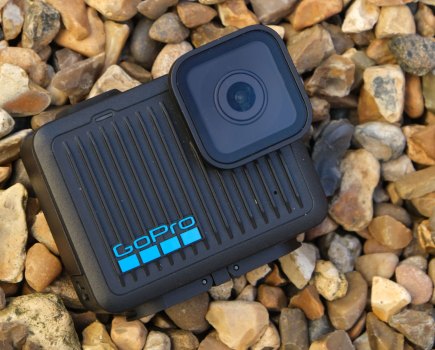Advertising feature
Discover how Blackmagic Design video cameras and editing software were used to make a powerful and moving video about the efforts to protect the gorilla population in Uganda from poachers
An inspiring documentary on gorilla conservation in Uganda called The Hearts of Bwindi has been put together by a crack team using Blackmagic Design video cameras, with all the editing done with DaVinci Resolve Studio, using Blackmagic Cloud for storage.
The video, which was presented by That Gorilla Brand in partnership with the Ugandan Wildlife Authority and The Gorilla Organization, was filmed in the unique surroundings of Bwindi Impenetrable National Park deep in Uganda, and was released to coincide with World Ranger Day at the end of July.
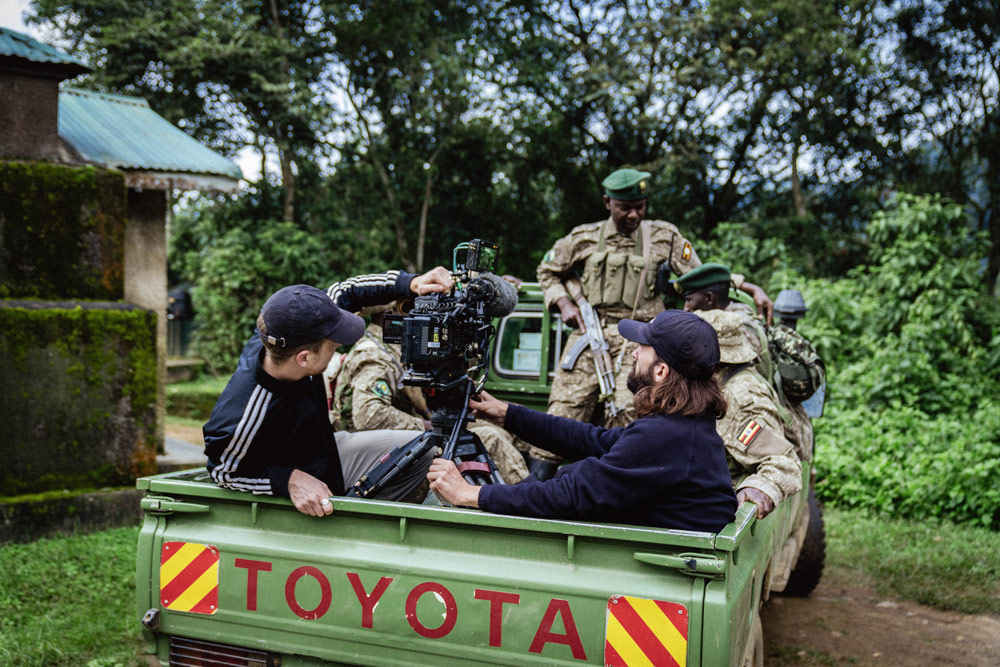
The production team had to work quickly, and in challenging conditions
‘Bwindi National Park is a UNESCO World Heritage Site and one of the most biodiverse places in the world,” says filmmaker Charli Doherty, who was part of the small production team from Biscuit Bunker. ‘We wanted to transport the audience to this incredible ecological site and give the viewer an appreciation of the vital conservation work carried out by wildlife rangers, alongside local communities.’ Other members of the team included cinematographer Will Hadley, editor Olly Cooper and producer Tom Neish.
‘We had a two camera setup, shooting between the URSA Mini Pro 12K and Pocket Cinema Camera 6K Pro,’ Charli explains. ‘The big deal with a complete Blackmagic workflow is not just what can be achieved with the hardware, but also what the software can do.
Olly and I have been collaborating very closely within the edit itself, even though I’m based in Berlin and he’s in the south of England. It’s a whole ecosystem that just works flawlessly between hardware, recording, and into post production.’

Armed escorts were needed at all times, to safeguard against the ever-present risk of meeting armed poachers
The art of gorilla conservation
The Hearts of Bwindi is full of richly detailed sequences of the rangers and villagers of the National Park, contrasted with colourful macro shots of the insects and wildlife, all against the background of the forest itself. However, there are some purely cinematic touches.
A wide canopy shot, accompanied by the sound of a bird, cuts to reveal it is a ranger whistling; it strengthens the sense of an intimate connection with nature that pervades the whole film. When the rangers are alerted to the presence of poachers, the film moves from a tension building, rack-focused shot of a series of crouched rangers into a stylised 5fps sequence as they dash into the jungle.

The arrest of a poacher
‘In a documentary situation, running around a forest can present many challenges,’ adds cinematographer Will Hadley. ‘There’s a lot of humidity, moisture and dirt, and all sorts of factors that can be hard for us, as well as the cameras. With a little TLC at the end of each day, we didn’t have any issues with the Blackmagic kit, however.’
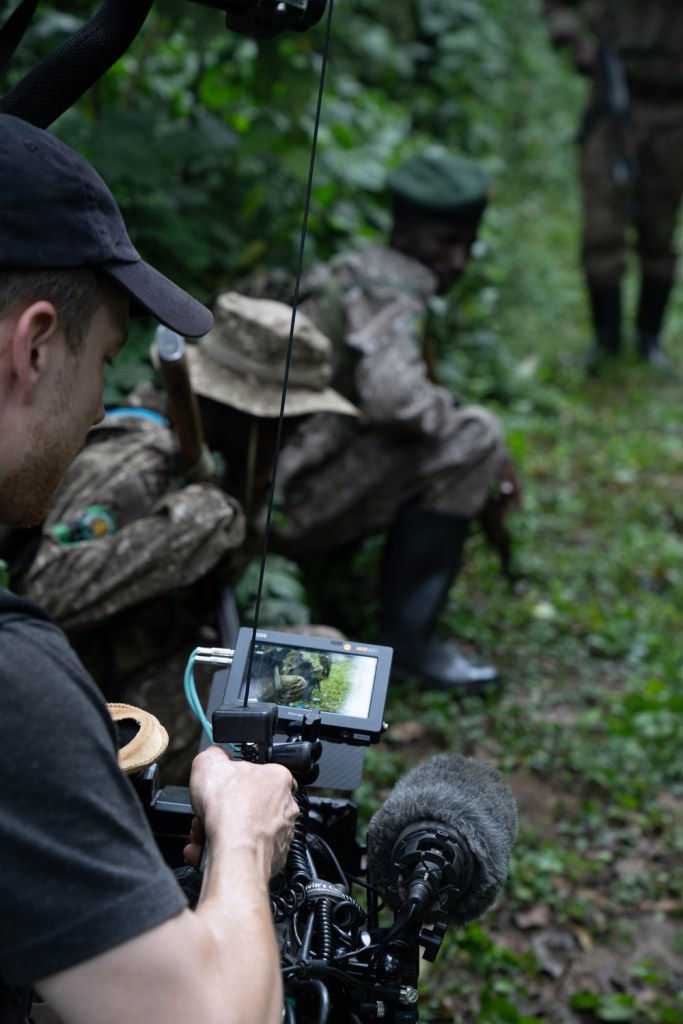
The Blackmagic Design cameras coped admirably with the tough shooting conditions
Will shot on DZO Zooms. ‘They’re a flexible option for documentary, but I like the texture you get from them,’ he explains. ‘We also had some super- wide primes for lots of wide portraits, as well as the B roll capturing the forest and the environment. Then there are macro shots of ants and beetles and the forest floor in detail, which are important for contrasting those grand epic landscapes.’
The URSA Mini Pro 12K’s 14 stops of dynamic range, and the Pocket Cinema Camera 6K Pro’s 13 stop latitude, gave the team plenty to work with. ‘Dynamic range is incredibly important because we were constantly shooting into shadows,’ Charli Doherty explains.
Ideal tools for capturing the efforts to protect gorillas
‘We did a lot of shooting up into the canopy, often having the environment dominate the space above the rangers,’ he adds. ‘We got all the detail in the skin and the shadows without clipping the sky.
We shot full-sensor 6K video on the Pocket Cinema Camera, but what’s great about the URSA 12K is being able to mix resolutions,’ he continues. ‘We shot a few scenes in 8K, but it was mostly in 4K. It’s an incredible innovation, having the option to jump resolution without cropping the sensor. It looks very filmic, and that’s the aesthetic I tried to achieve.’
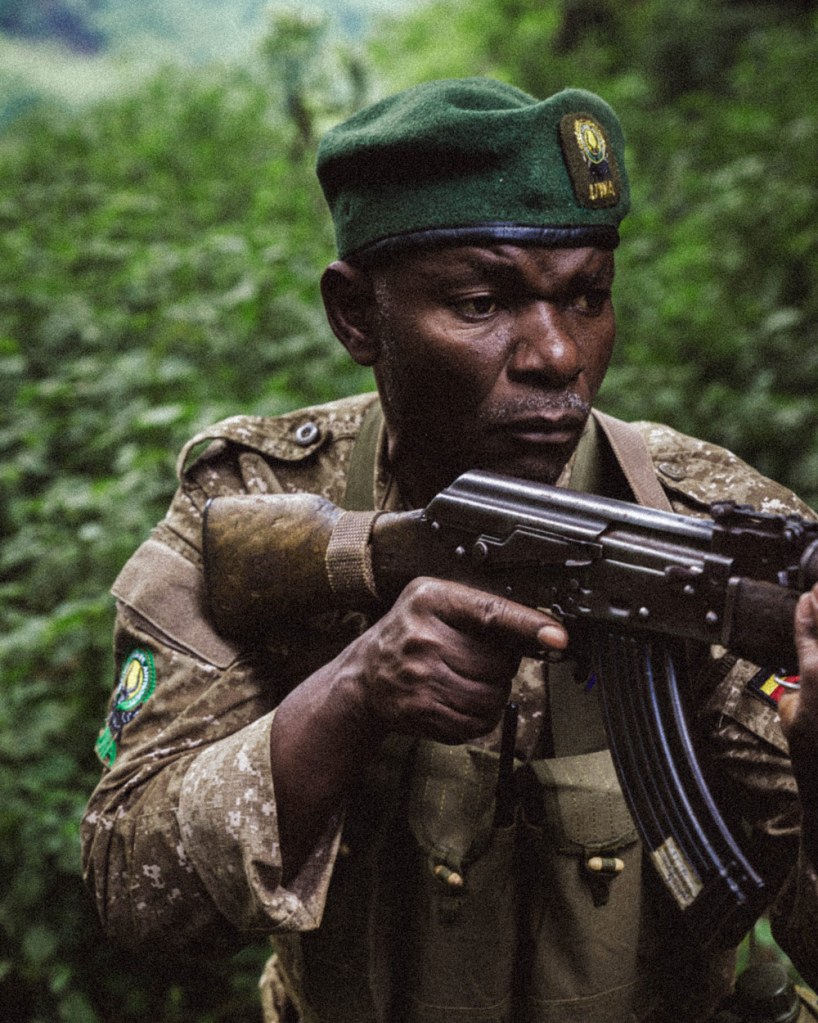
Careful editing in DaVinci Resolve added to the sense of drama and danger
Charli further enhanced the cinematic look at the editing stage, using DaVinci Resolve Studio. ‘We applied a Kodak 2383 LUT towards the end, but a big part of the work in post-production was matching footage shot across a few days in very different environments and lighting conditions, from different cameras,’ he explains.
As a drone was used for aerial shots, Charli had to match this with the other footage. ‘The colour warper tool in DaVinci Resolve is just a godsend for this,’ he says. ‘For example, the drone’s greens are very different from the URSA, but we had the ability to just pick that one colour and shift it with the tool to match and get them consistent.’
A creative group effort
Although 95% of The Hearts of Bwindi was filmed by the cinematographer, Charli and producer Tom Neish were able to lend a hand in shooting. ‘We’d do multiple takes of similar sequences, and there were moments where we had to cross shoot, so it was great having another camera on hand to know you’ve got a different angle – or if we wanted to get a gimbal tracking shot to know that we’ve got a super wide lens on the Pocket Cinema Camera,’ Charli explains.
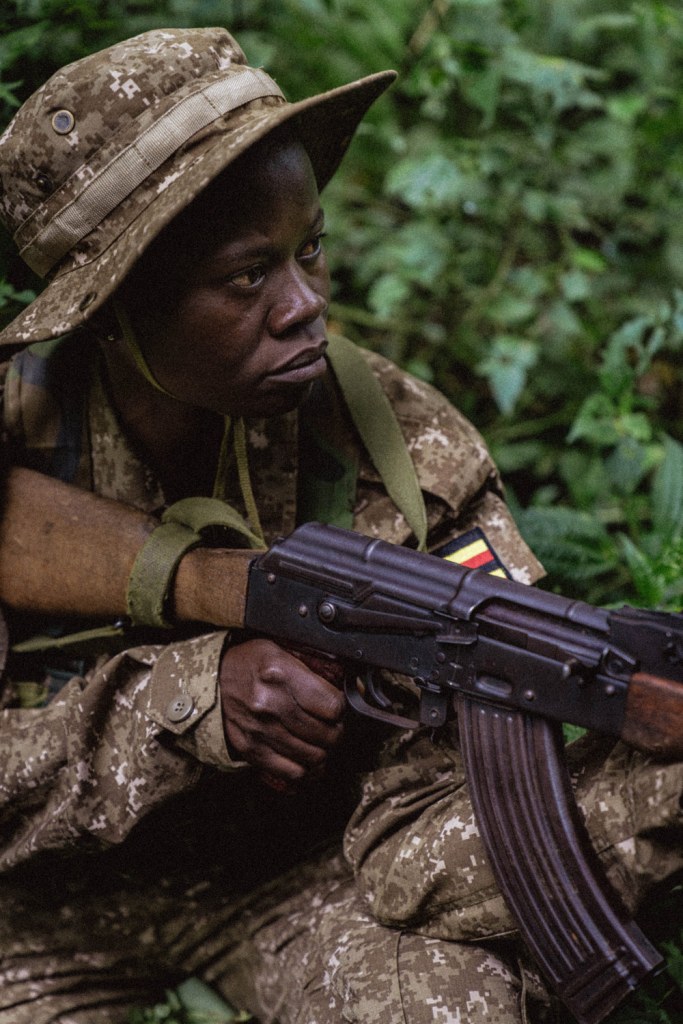
The production team hope the video will raise awareness of the incredible conservation work done by rangers in Uganda
It’s great for coverage. We had a very limited time to do this, and as we were moving quickly through the space just having an option on the second camera, and a different look, presented more options for us.’
The built-in ND Filters of the URSA Mini Pro 12K helped control the fluid change in exposure and depth of field needed for certain shots. ‘Having the internal NDs allowed us to fine-tune the subject,’ adds Will Hadley. ‘The forest environment is rich in colour, so we had that as a palette, while the intimate close ups showed beautiful skin tones.’

The team also recorded the important outreach work carried out by the rangers
‘We had a Tilta Follow Focus system, and when things were more dynamic, I was pulling focus from the director’s monitor,” adds Charli. ‘I think one of my favourite shots of the film is where Will pulls focus from the forest to a portrait of a ranger, from nature to the human. I love the visual shift moving us along the narrative, moving the audience’s focus from the forest to the rangers.’
Charli hopes the film has a similar impact for audiences, ‘I hope people look up the work of wildlife rangers. As well as catching poachers, they’re building partnerships with communities and organisations which offer sustainable alternatives to wildlife crime. It’s an incredibly valuable job; they’re protecting the biodiversity that is vital for all life on Earth.’

